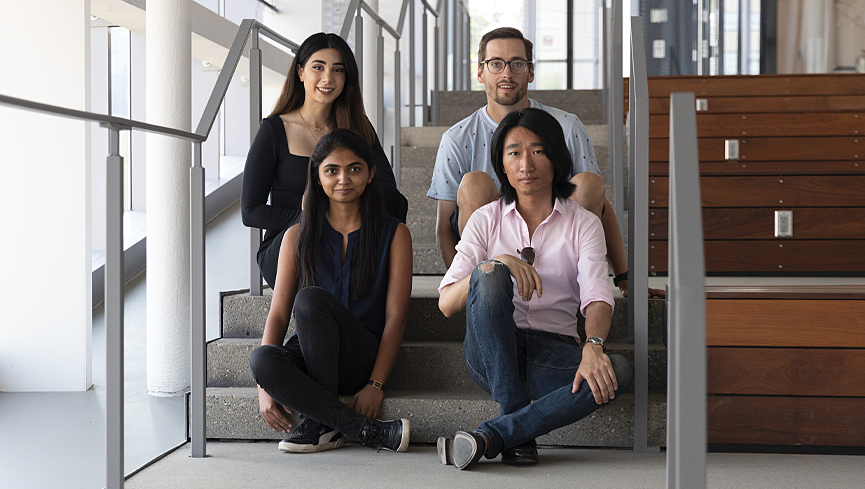What if scientists could have predicted the path of COVID-19 infections and insured communities in those soon-to-be-affected areas had enough resources, such as personal protective equipment (PPE) and ventilators, to help stop further spread?
That’s the question a team of four ULethbridge graduate students from the Canadian Centre for Behavioural Neuroscience (CCBN) asked themselves as part of STEM Fellowship’s Inter-University Big Data Challenge 2022, a global competition that saw them take first place in the Research Solutions category.

HaoRan Chang, a PhD candidate, Lukas Grasse, a PhD student, and Yagika Kaushik and Sally Sade, both master’s students, analyzed a data set from Johns Hopkins University that tracked the daily number of new cases of COVID-19, mostly at locations in the United States, from March 2020 to June 2022.
The COVID-19 pandemic revealed flaws in the world’s ability to respond to an unexpected health disaster. Essential medical supplies like PPE and ventilators were in short supply and could not be sent to the areas that needed them the most. But, the students reasoned, if the next geographical location in the pandemic’s path could be predicted, the potential to stop the spread of the virus would be far greater.
“What we could do with that data is allocate scarce resources to those regions pre-emptively before you see spikes occurring, so you’re not wasting resources in one region when they could be allocated to another,” says Sade.
“Our goal was to predict the spread of COVID, both in clusters of geographical locations and also across time,” says Grasse. “We were trying to predict, if we have a certain number of cases in a certain location, how that is going to spread to other locations in the future and also predict the number of future COVID cases in general.”
The team reduced the number of locations into 10 clusters that represented geographically similar locations in the same time period.
“We could see how each cluster influenced other clusters,” says Grasse. “A cool thing we found is that certain clusters, if they could have been eliminated, would have prevented the spread of COVID to later clusters. The idea is that if you could stop the spread of COVID at this one time and place, it would actually prevent all this later infection.”
In the U.S., the data shows COVID cases started along the east and west coasts and then spread to the Midwest, before spreading back again to the coasts.
“If some of that infection could have been prevented in the Midwest, or resources actually allocated there even though there isn’t quite the same population density as the coast, you could have hopefully prevented a lot of the later cases in the high population areas on the coasts,” says Grasse.
“The model is generative in a sense, as you’re able to forecast how the cases will evolve over time,” says Chang. “We are able to predict or forecast the number of cases across wide geographical regions. That way, we’re able to allocate and pinpoint resources in a much more centralized manner.”
Using their model, the team predicted a spike in COVID cases for July 2022, Sade says, and that turned out to be the case with the surge in the BA.5 subvariant.
Kaushik learned about the competition and encouraged her colleagues to get involved. They participated virtually in the global competition that saw 213 teams from 69 universities enter. The team submitted a scientific article outlining their data analysis and results, which was chosen by judges as one of the top 16 entries. The team submitted a video about their project and took part in a question-and-answer session with the judges.
In the end, the ULethbridge team placed first in the Research Solutions category. They credit their different backgrounds in neuroscience, biotechnology and computer science for helping them approach the problem from a different perspective. Along with a $1,000 prize, the team’s manuscript will be published in the STEM Fellowship Journal.
“The way we approached the whole problem was very different from other teams, where perhaps a lot of people came from purely analytical backgrounds. They would see the problem as a set of analyses that you have to undertake,” says Chang. “In our case, the analysis follows post hoc from the problem itself. Having a neuroscience background gave us a unique perspective on how we viewed this data set.”
